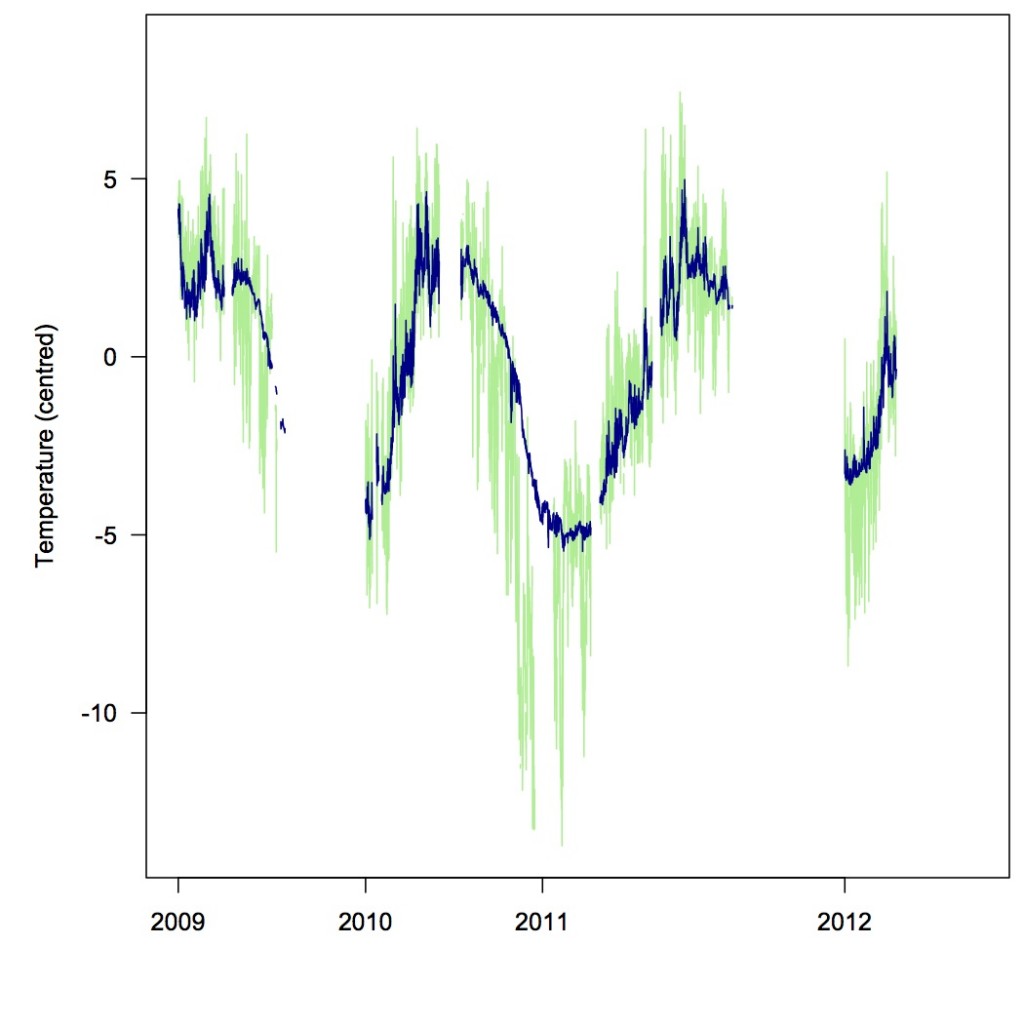When I received the sad news, yesterday, that John Steele had died of the cancer that had afflicted him this last year, my instinct was to share the passing of a scientific hero as widely as possible. I duly tweeted, but given the general lack of response I wondered if perhaps his legacy is not as widely appreciated as I believe it should be. Hence this personal appreciation. I never met John, although I had been corresponding with him over the last couple of months, and was due to speak to him the morning after he was hospitalised for what turned out to be the final time. As an aside - the fact that I was approached, in such a generous manner (His first email to me ended: “This email is a rather long-winded way of saying - welcome; and I look forward to useful and illuminating discussions”) to collaborate with someone whose work, as you’ll see, has been an inspiration to me, is one of those great egalitarian things that happens from time to time in science, and I was thrilled to have this opportunity. But, as a result of this limited personal interaction - just a handful of emails - my appreciation is limited to John’s work, both his publications and this new, unpublished material to which I was contributing, which was buzzing with intriguing and innovative ideas.
Actually, I can’t hope to do justice to John’s wider scholarship here, and cover only really that small part of his work which addressed the issue of differences in temporal and spatial dynamics between marine and terrestrial ecosystems, an issue that has been central to my own research. As I set out in an earlier post, my own journey to the position now where I (reasonably confidently) call myself a marine ecologist has been rambling and convoluted. Along the way, certain of John’s papers stood out like beacons, reassuring me that there was indeed a path to follow, no matter how overgrown.
Mainly, these beacons consisted of a clutch of papers published in the early 1990s, in particular a 1991 paper in the Journal of Theoretical Biology (Can ecological theory cross the land-sea boundary?) and a 1994 Phil Trans paper with Eric Henderson on Coupling between phyiscial and biological scales). Similar ideas were further developed in papers in Ecological Research (Marine Ecosystem Dynamics: Comparison of Scales) and Bioscience (Marine Functional Diversity). All of these, in turn, were building on John’s 1985 review in Nature, A comparison of terrestrial and marine ecological systems.
Key to all of these papers is the idea of scale, both spatial and temporal, and especially how the scale of variability is different in marine than in terrestrial systems. Because the seas act as an enormous thermal buffer, variability is fundamentally different there than on land. I’ve been playing with some data to try to show this (see below), but the concept is simple: if you stand in one place for 24 hours on land, depending where on Earth you are, you might easily experience a temperature range of 20˚C or more. In most places, the temperature of the sea - even at its surface - won’t vary nearly this much in a year. Spatial variation is similar - you will typically find much more variability (along all kinds of axes, not just temperature) in a square kilometer of terrestrial habitat than in a square kilometre of sea. This clearly has impacts on the organisms living there: if you’re a lizard and you’re too hot, you can maybe move a metre or two from full sun into the shade. A marine fish might have to move hundreds of kilometres (or tens of metres deeper) to achieve a similar drop in temperature. So these patterns of environmental variation are clearly important in order to understand species’ responses to climate change, and can explain some of the subtle differences already seen between marine and terrestrial species (see for example recent papers by Sunday et al., Burrows et al.).
One of John’s major insights was that physical and biological processes were typically more closely coupled in space and time in marine than in terrestrial systems. This stemmed from his strong background in physical oceanography. Indeed, in our recent correspondence he confessed “I have no systematic training in biology”; rather he epitomised the interdisciplinary nature of fisheries science, in which connections between the physical environment and biological resources have always been recognised in a way that terrestrial ecologists have only relatively recently accepted. Despite this lack of formal training, his ecological insight was astute, as apparent throughout his 1974 book The Structure of Marine Ecosystems, from which, incidentally, I took the opening quote for the Royal Society Research Fellowship application which currently supports me: “The first impression one forms of any community is usually of the diversity of species present, and of the differences in numbers, with some species abundant and others scarce”. That book has some interesting parallels with Alec MacCall’s later Dynamic Geography of Marine Fish Populations, in that it’s ecological content (MacCall’s book is, in my view, an excellent primer on macroecology, though the word is not used) was destined to be overlooked by most ecologists because the word ‘marine’ appears in the title.
This has inevitably only scratched the surface of John’s work. What drove him, I think, to return time and again to the marine-terrestrial comparative idea is summed up best in the abstract of the Journal of Theoretical Biology piece: “It is proposed that theories developed in one sector can be tested most critically in the other, with potential for greater generality.” This idea has guided my own research, and was constantly in mind while writing several papers, for example this one which begins with a Steele quote (“I argue that we should attempt to address the question of [ecological] generalizations capable of crossing the land-to-sea boundary”) and, in particular, this opinion piece I published last year. A piece which, I was delighted to discover, John had seen: “I had read your recent TREE paper with interest, and of course, appreciated your references to my cry in the wilderness two decades ago.” I hope that in continuing this search for generality, and performing critical tests of theory, I might send up one or two small flares of my own which - even if they don’t light the path all that brightly - might at least lead others to John’s more illuminating beacons.

